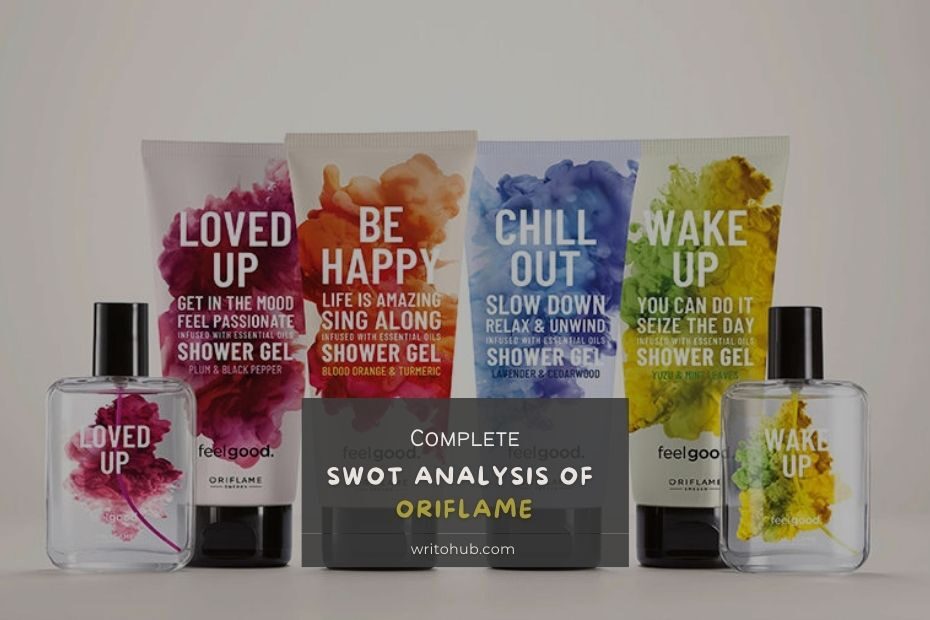Oriflame, a well-known global beauty and cosmetics company, operates in a highly competitive industry.
A SWOT analysis of Oriflame reveals its strengths, weaknesses, opportunities, and threats, offering insights into its strategic position in the dynamic market.
Strengths in the SWOT Analysis of Oriflame
- Strong Brand Recognition: Oriflame has built a strong brand identity over the years, associated with quality and natural beauty products.
- Global Presence: The company operates in more than 60 countries, providing access to diverse markets and consumer bases.
- Direct Selling Model: Oriflame’s direct selling model fosters strong customer relationships, encourages brand loyalty, and enables personalized product recommendations.
- Natural and Eco-friendly Products: Oriflame focuses on natural and eco-friendly product lines, aligning with growing consumer preferences for sustainable beauty.
- Innovative Product Development: The company continually introduces new products and innovative beauty solutions, staying competitive in a rapidly evolving industry.
Weaknesses in the SWOT Analysis of Oriflame
- Dependence on Direct Selling: Oriflame’s dependence on a direct selling model can limit its market reach in regions where this approach is less effective or regulated.
- Intense Competition: The beauty and cosmetics industry is highly competitive, with numerous brands offering similar products, affecting pricing and market share.
- Global Economic Fluctuations: Economic downturns can impact consumer spending on beauty products, influencing Oriflame’s sales and revenue.
- Supply Chain Challenges: Managing a complex supply chain for cosmetics and personal care products can expose the company to supply chain disruptions.
- Digital Marketing and E-commerce: The increasing influence of e-commerce and digital marketing requires a robust online presence and digital marketing strategies to remain competitive.
Opportunities in the SWOT Analysis of Oriflame
- Digital Transformation: Investing in e-commerce and digital marketing can expand the company’s market reach and enhance customer engagement.
- Sustainability Initiatives: Strengthening sustainability efforts in packaging, sourcing, and product development can resonate with environmentally conscious consumers.
- Global Expansion: Exploring opportunities in emerging markets, where the demand for beauty products is growing, offers significant potential for growth.
- Personalization: Offering personalized beauty solutions through data-driven strategies can enhance customer satisfaction and loyalty.
- Men’s Grooming: Tapping into the growing men’s grooming market by introducing tailored products and marketing can diversify product lines.
Threats in the SWOT Analysis of Oriflame
- Economic Downturns: Economic recessions and reduced consumer spending can impact the demand for non-essential beauty products.
- Regulatory Changes: Evolving regulations related to cosmetics ingredients, safety standards, and animal testing can impact product development and compliance costs.
- Counterfeit Products: The cosmetics industry faces issues related to counterfeit or imitation products that can harm brand reputation.
- Consumer Trends: Shifting consumer preferences, such as clean beauty and organic products, can impact product demand and market competition.
- Supply Chain Disruptions: Ongoing supply chain disruptions, geopolitical tensions, and trade disputes can affect production and product availability.
Conclusion
Oriflame’s SWOT analysis highlights its position as a global beauty and cosmetics company known for its natural and eco-friendly products.
To maintain and enhance its market presence, Oriflame must leverage its strengths, address weaknesses, seize opportunities, and mitigate threats while adapting to changing consumer preferences, environmental considerations, and competitive dynamics in the beauty and cosmetics industry.
